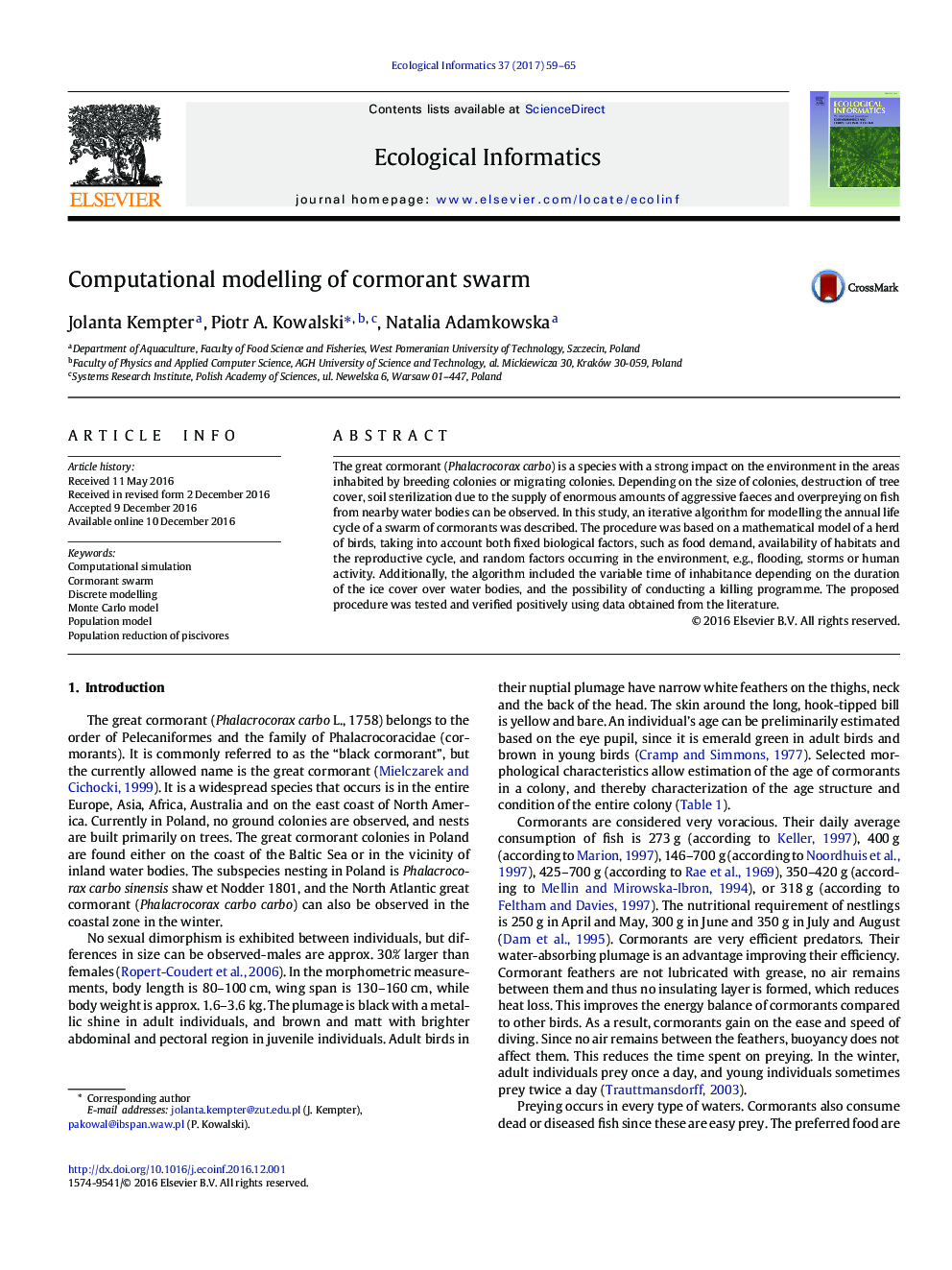| Article ID | Journal | Published Year | Pages | File Type |
|---|---|---|---|---|
| 5741961 | Ecological Informatics | 2017 | 7 Pages |
â¢Paper provides a an iterative algorithm for modelling the annual life cycle of a swarm of cormorants.â¢The procedure was based on of a herd of birds, taking into account both fixed biological factors, such as food demand, availability of habitats and the reproductive cycle, and random factors occurring in the environment.â¢The model and algorithm were based on swarm observations and literature data.â¢Described simulations may be taken into consideration by the entities issuing licenses for the shooting of these birds.
The great cormorant (Phalacrocorax carbo) is a species with a strong impact on the environment in the areas inhabited by breeding colonies or migrating colonies. Depending on the size of colonies, destruction of tree cover, soil sterilization due to the supply of enormous amounts of aggressive faeces and overpreying on fish from nearby water bodies can be observed. In this study, an iterative algorithm for modelling the annual life cycle of a swarm of cormorants was described. The procedure was based on a mathematical model of a herd of birds, taking into account both fixed biological factors, such as food demand, availability of habitats and the reproductive cycle, and random factors occurring in the environment, e.g., flooding, storms or human activity. Additionally, the algorithm included the variable time of inhabitance depending on the duration of the ice cover over water bodies, and the possibility of conducting a killing programme. The proposed procedure was tested and verified positively using data obtained from the literature.
